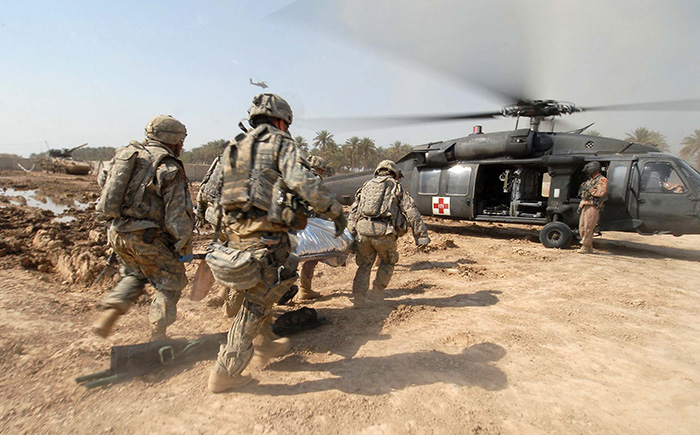Traumatic Brain Injuries, Team Work Top Priorities during DVBIC Visit to Fort Detrick

Standing before a select group of scientists and support staff at the National Cancer Institute at Frederick, Deputy Director for the Defense and Veterans Brain Injury Center Katherine Helmick spoke in blunt, immediate terms.
"We need to be doing more, faster," said Helmick during a lunchtime workshop. "Now is truly the time for action."
Helmick's ensuing presentation, an hour-long walk through DVBIC's core capabilities and constant quest for potential teaming opportunities, made clear the need for all investigators to understand the size and scope of the traumatic brain injuries problem in general across all military branches, along with the emerging methods available to care for injured patients.
"We've graduated to the point where we're working with high-risk, tip-of-the-spear people," said Helmick. "These are the kind of people whose symptoms are simply not going away."
The capabilities presentation is part of a series designed to support the 25 year anniversary of the organization, which began as the result of a congressional directive in 1991 and has since grown into a research and testing powerhouse with more than 60 current studies underway at 18 total network sites. DVBIC is also home to the only stated "Pathway of Care" in the Military Health System, meaning staffers are tasked with clarifying best practice methods in the care of TBI, as well as identifying roles and responsibilities of relevant organizations.
"It's amazing when you consider DVBIC has provided the type of infrastructure needed to succeed in this field for a quarter century," said Tammy Crowder, presentation organizer and Neurotrauma Portfolio Manager for the Combat Casualty Care Research Program.
For other audience members, being confronted with the sheer volume of Department of Defense TBI cases worldwide was enough to consider how to best partner and exchange key and relevant information with DVBIC. According to Helmick, recent overseas war efforts have more than tripled the annual TBI caseload among active military personnel, with more than 36,000 cases reported each year.
"Those kinds of numbers really make you think about what you, personally, can do to not only help DVBIC, but to help brain injury research as a whole," said Andrea Steele, program manager assistant for the Combat Casualty Care Research Program.














